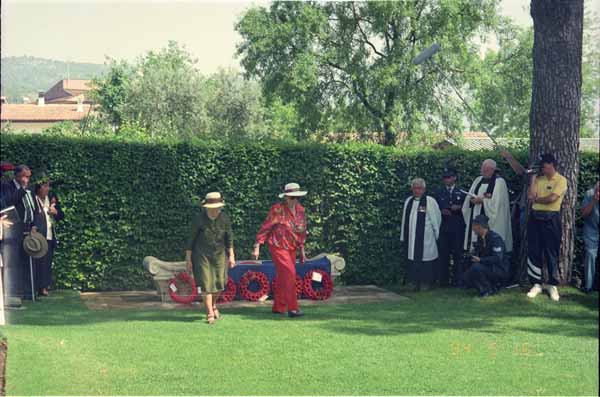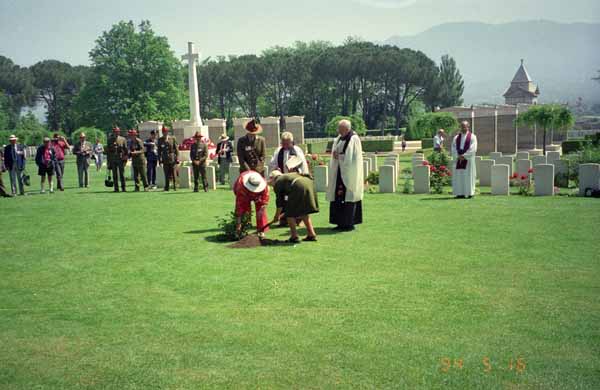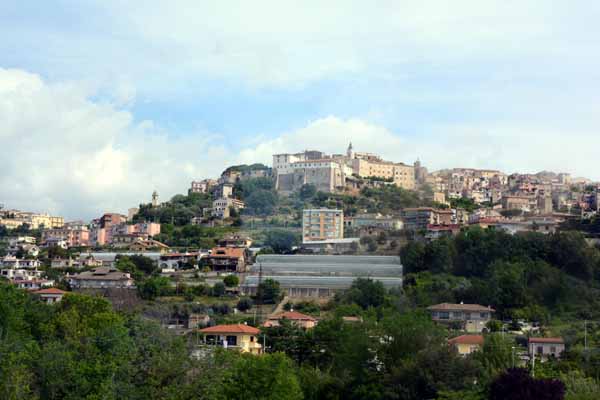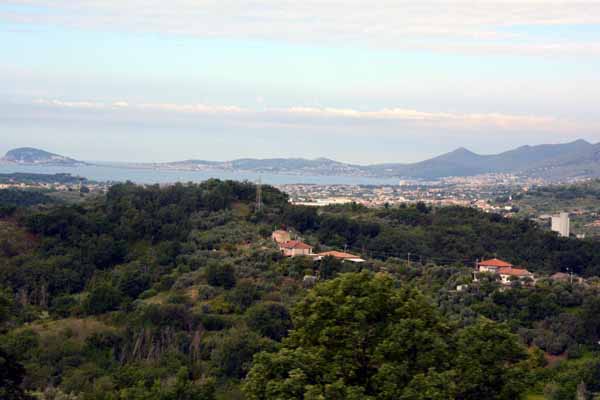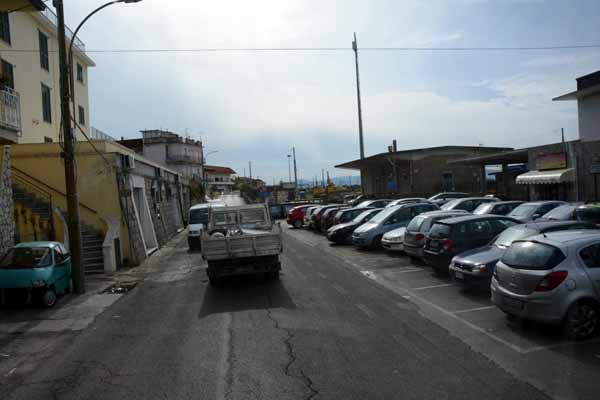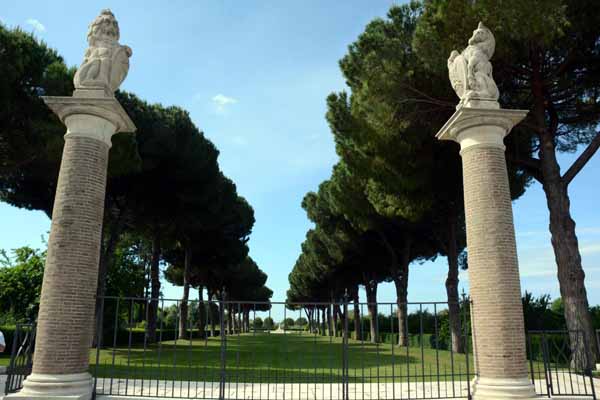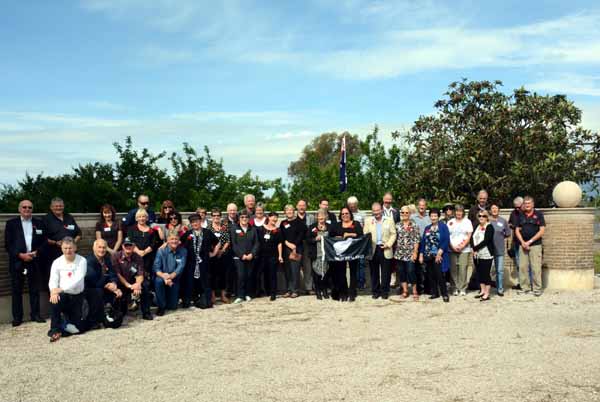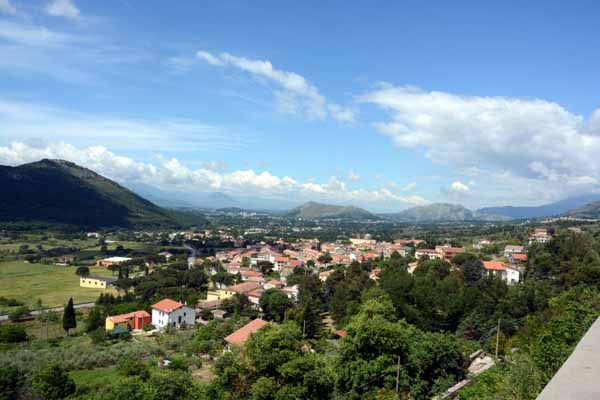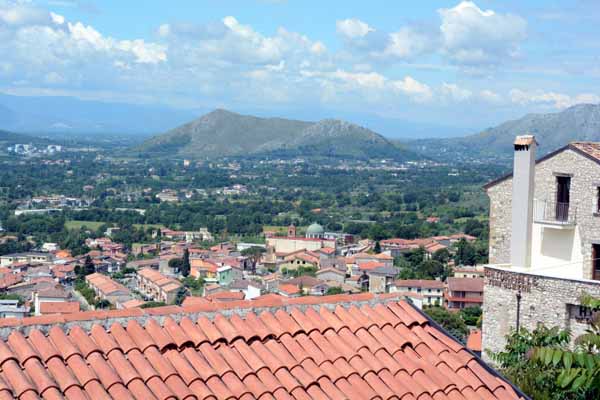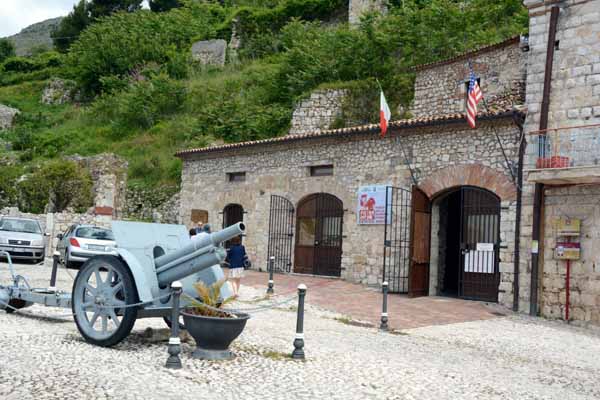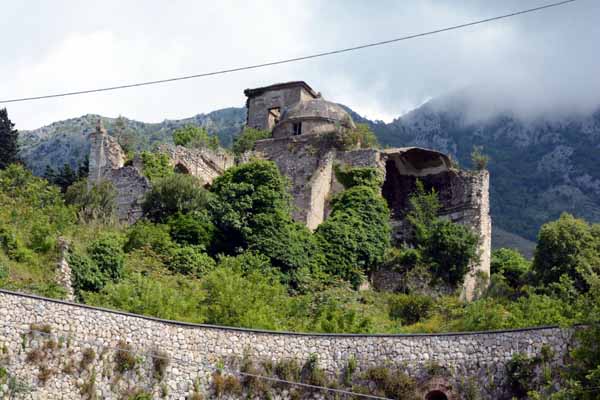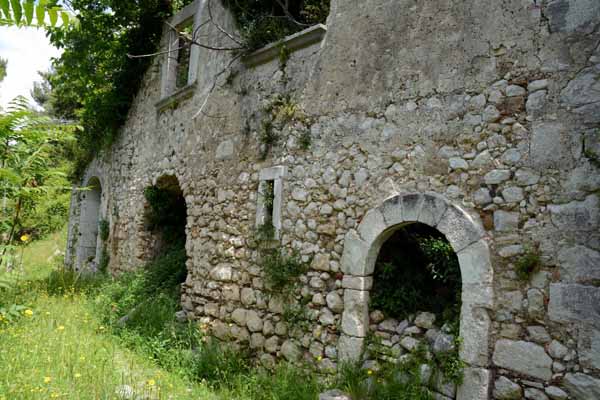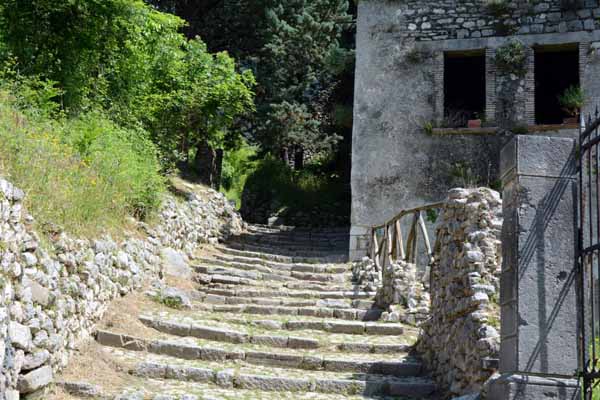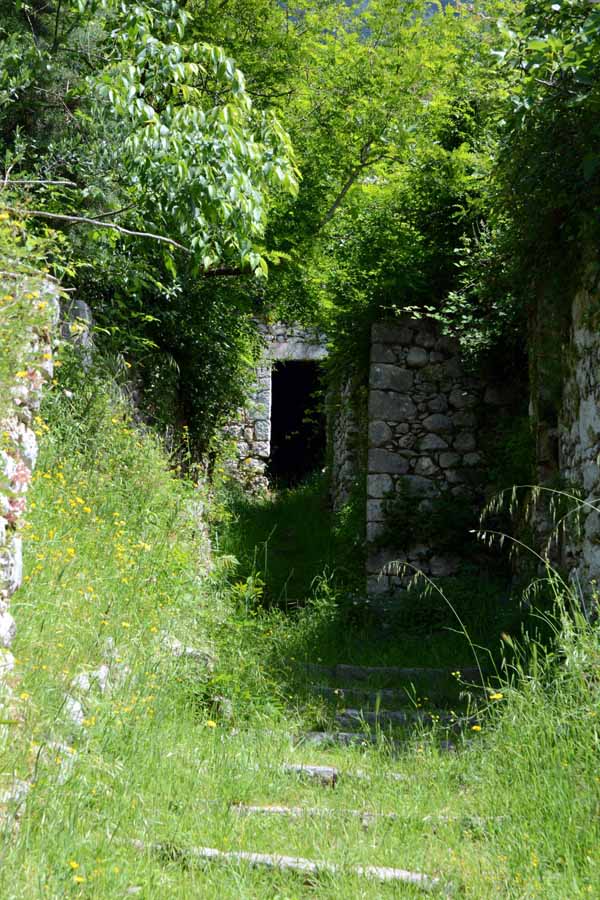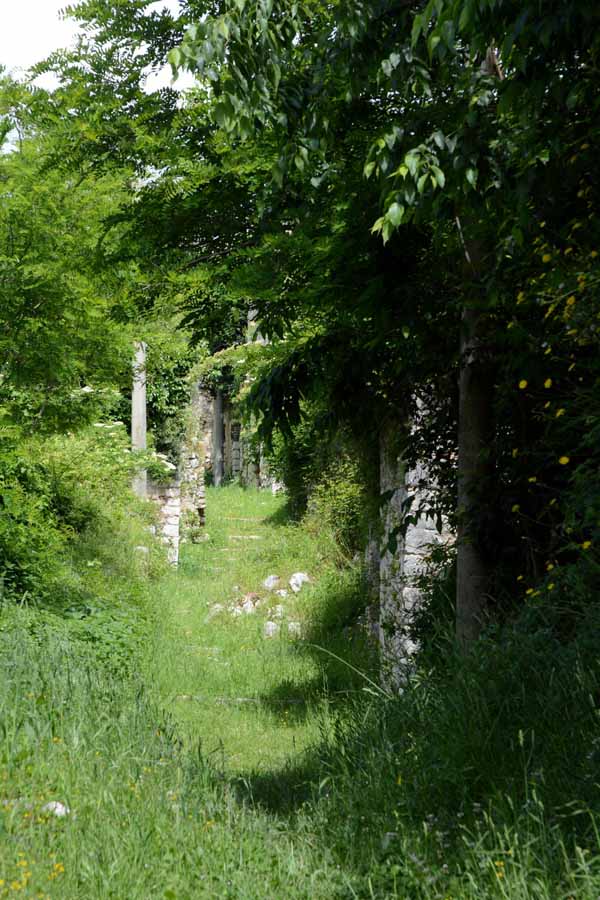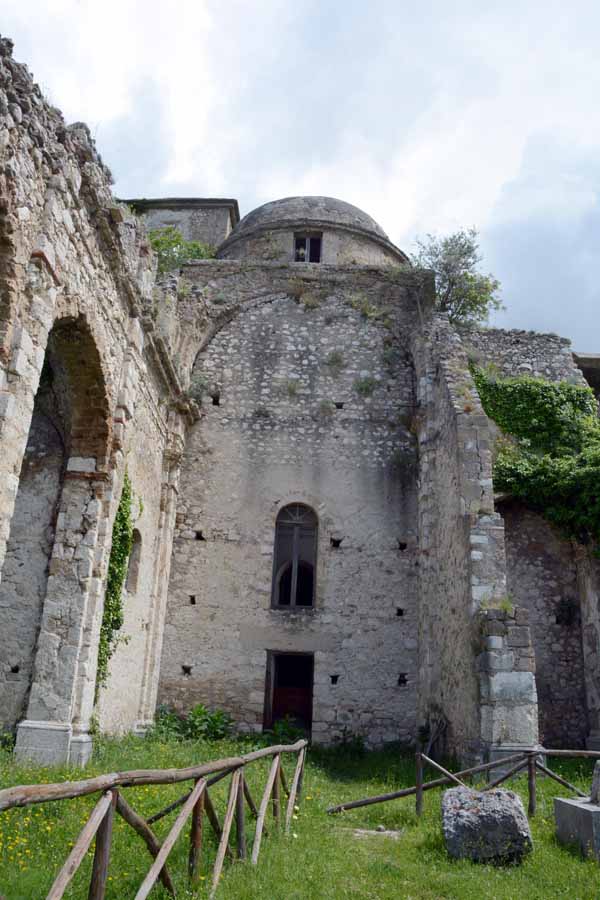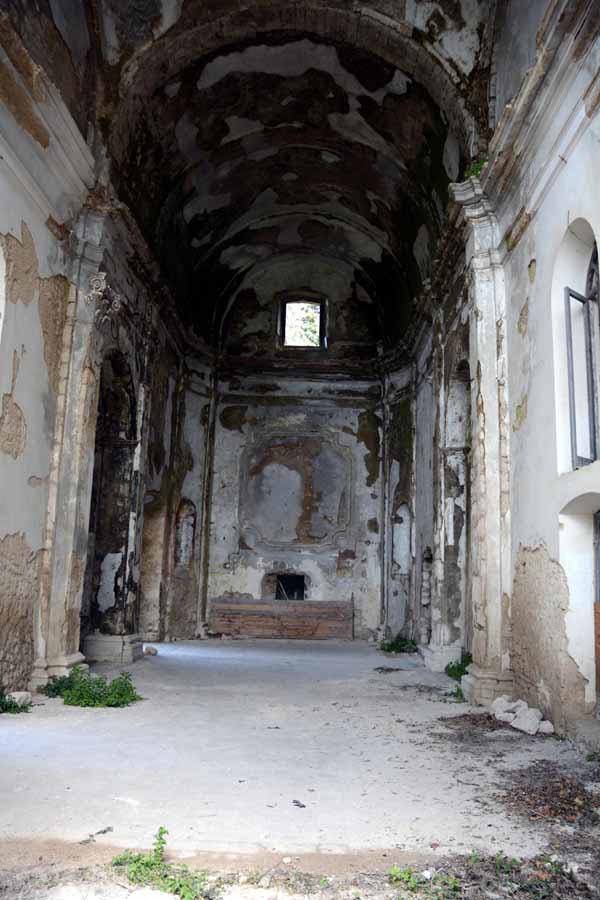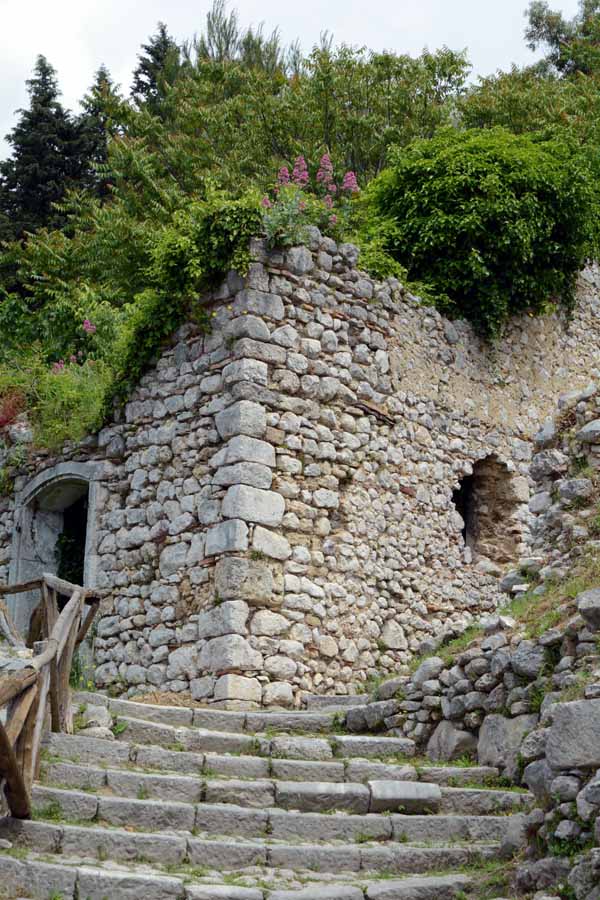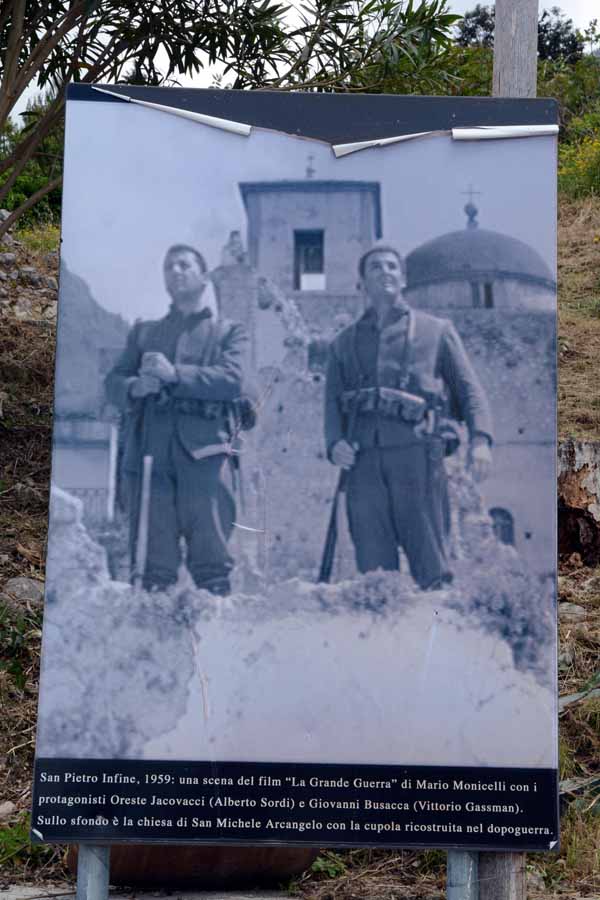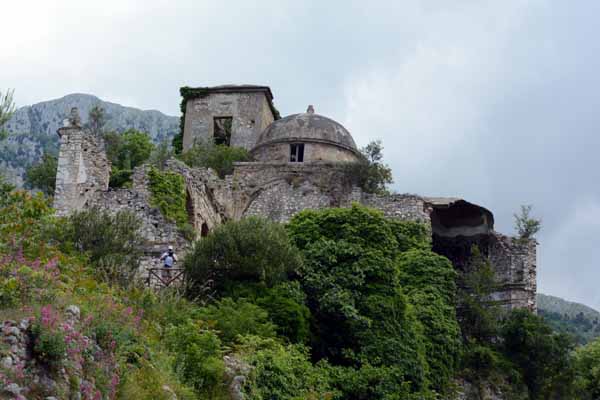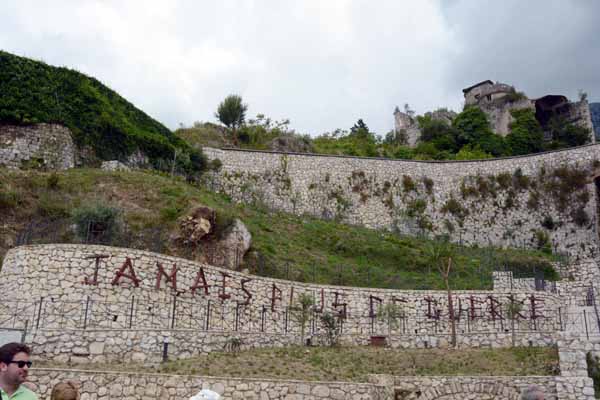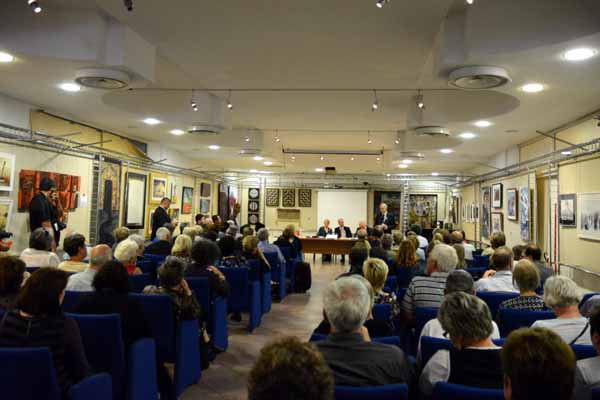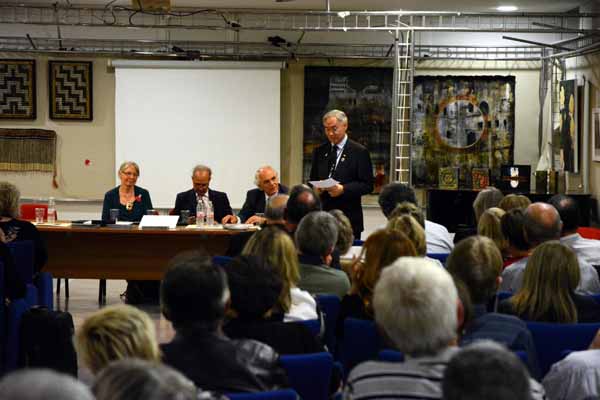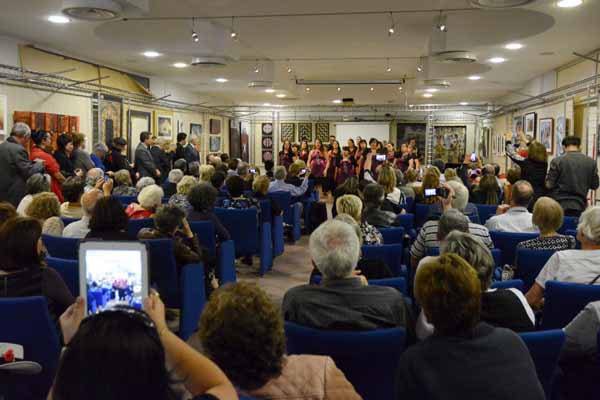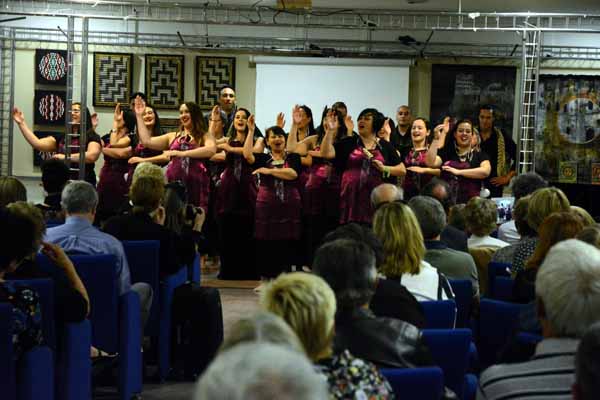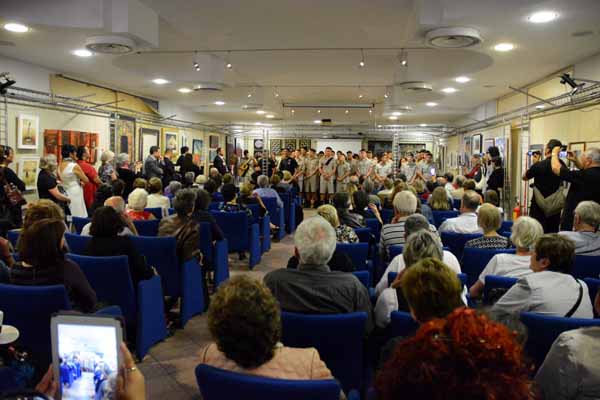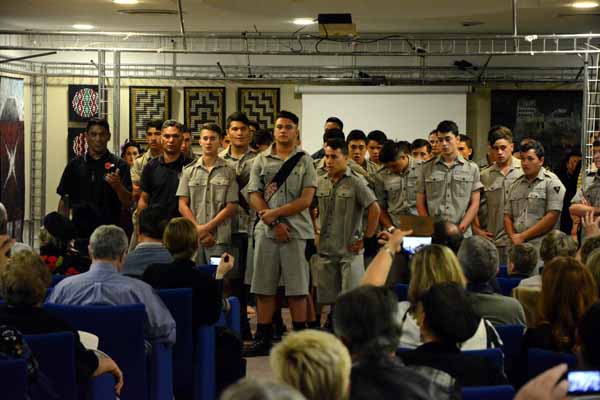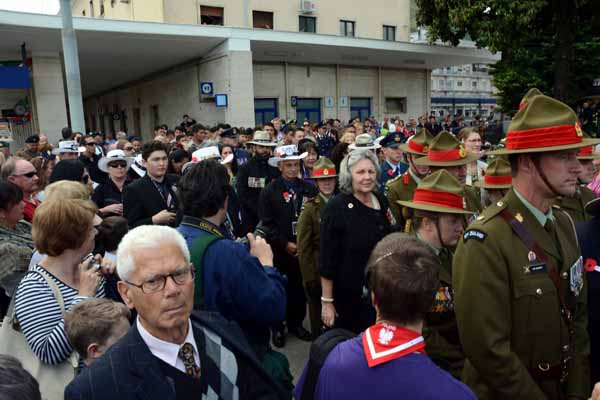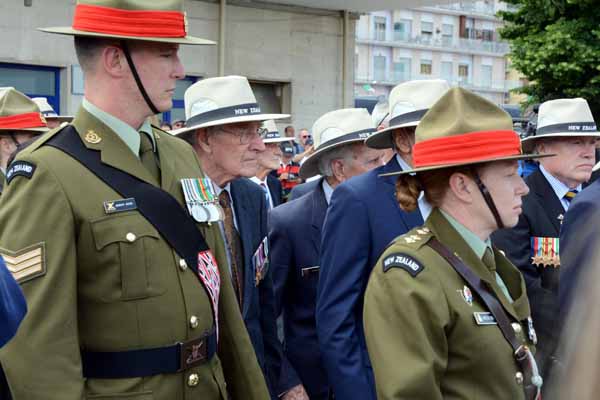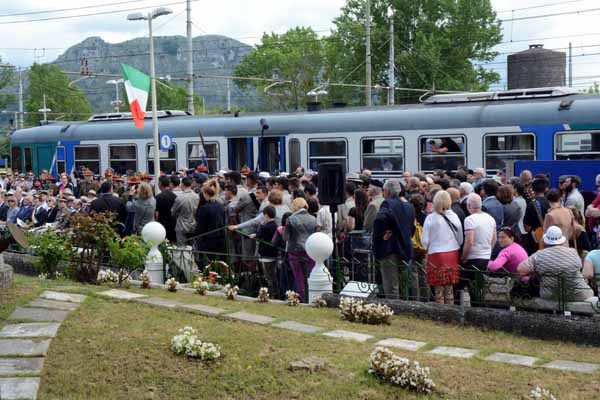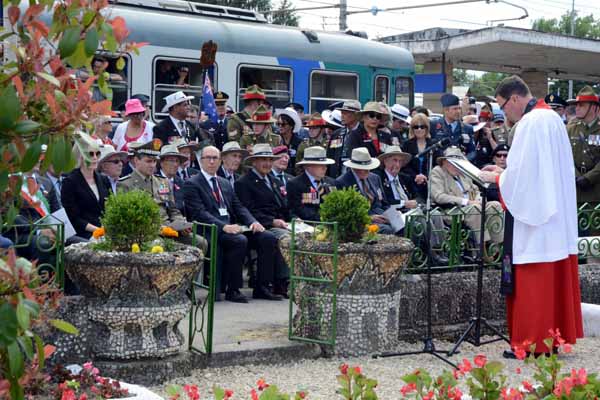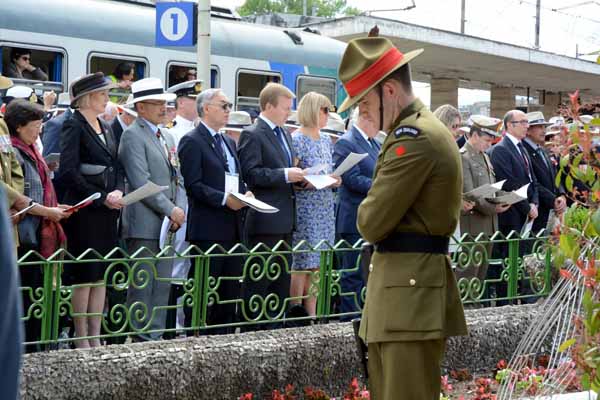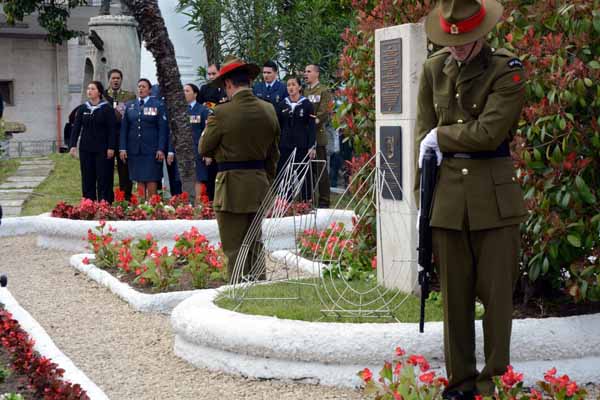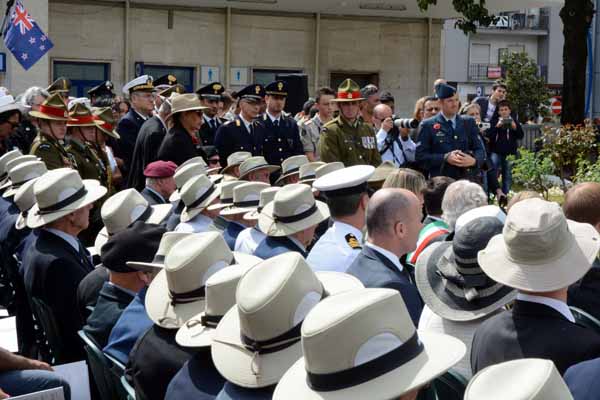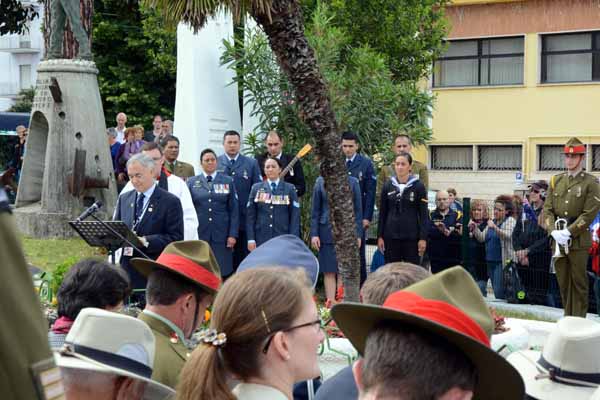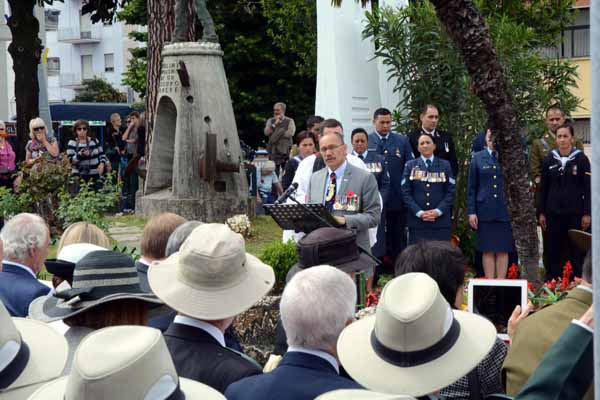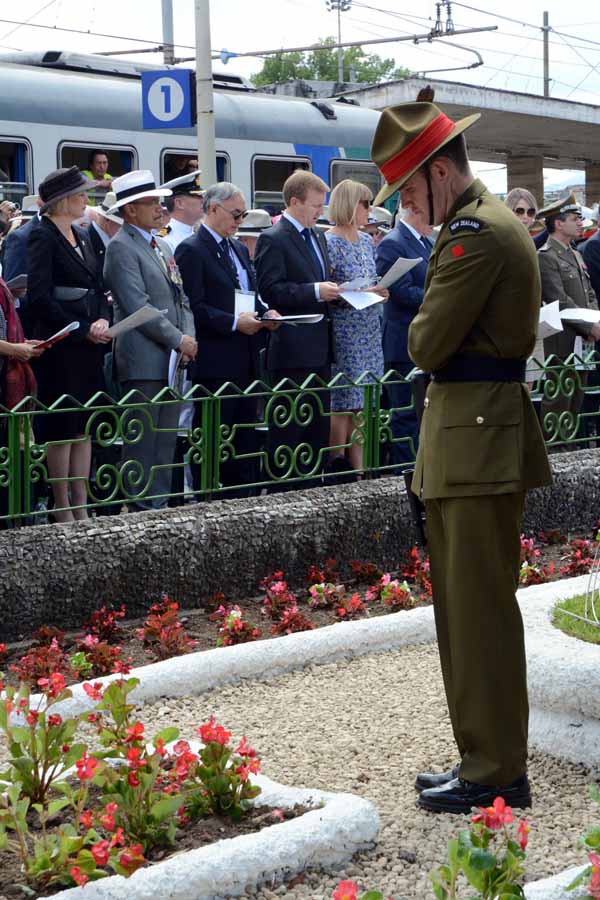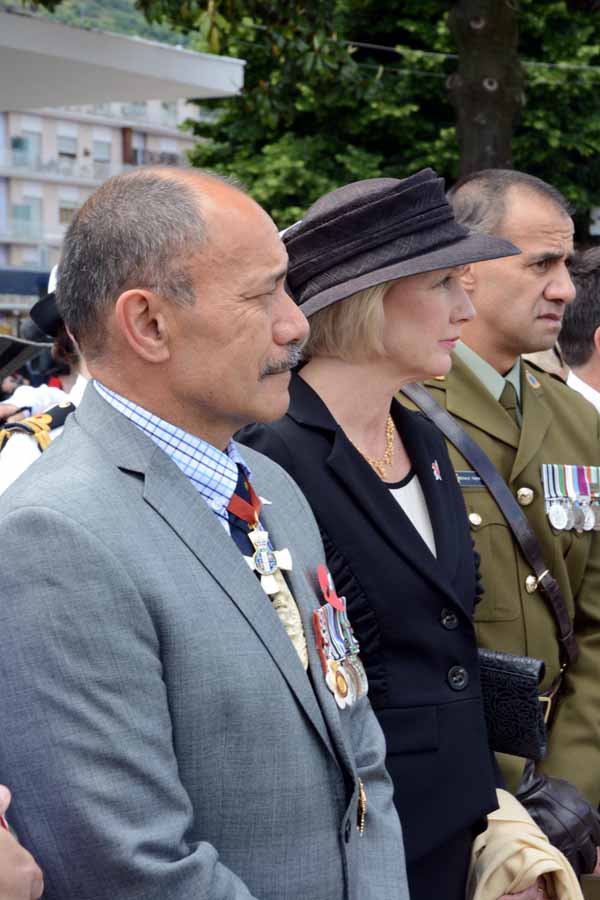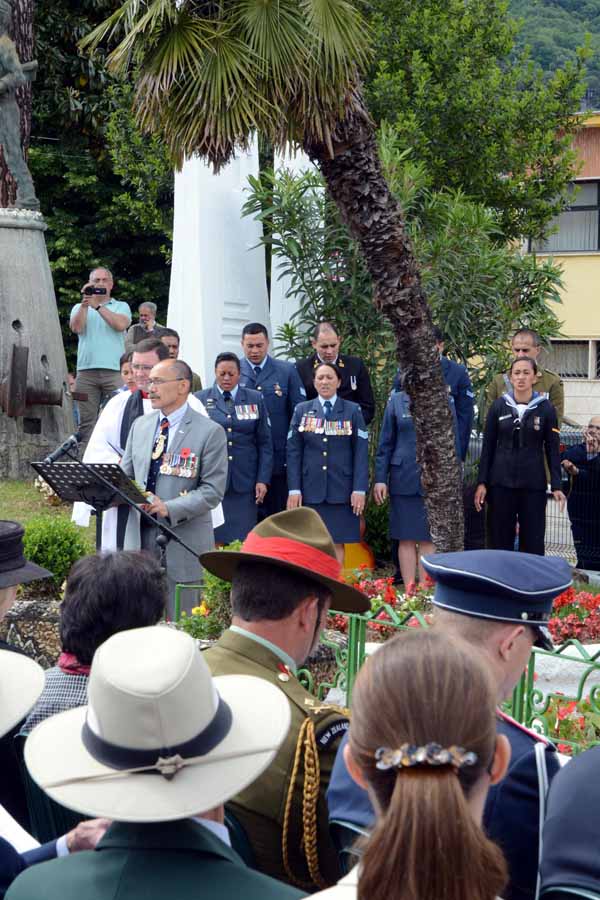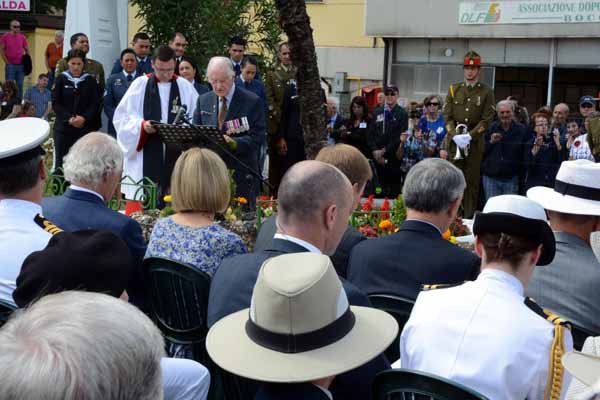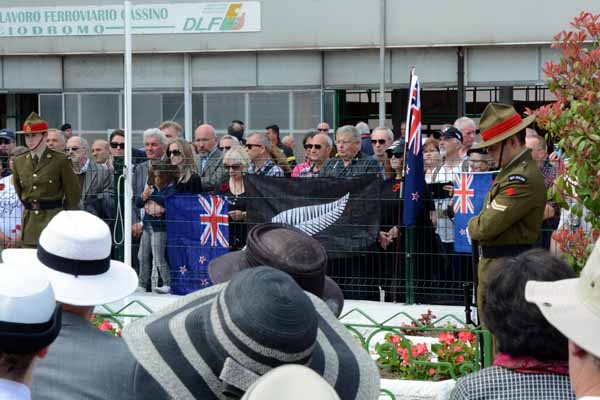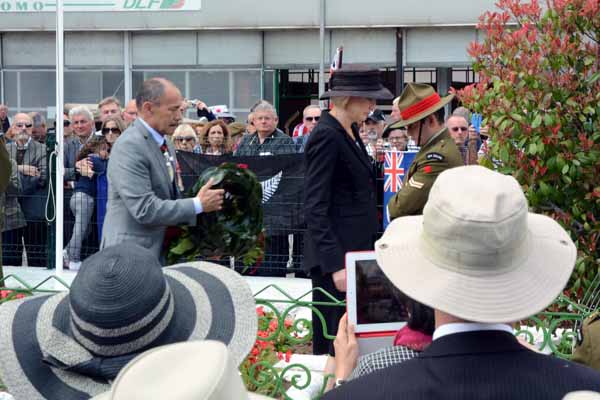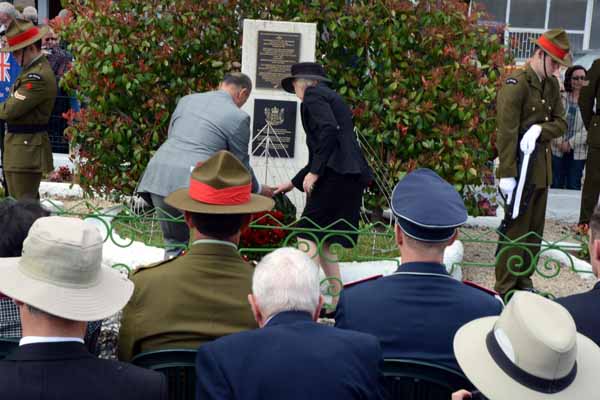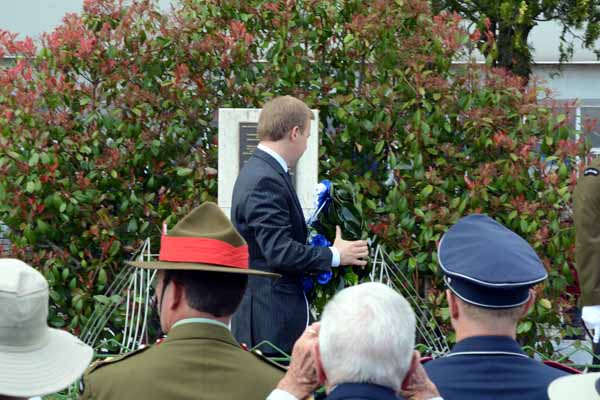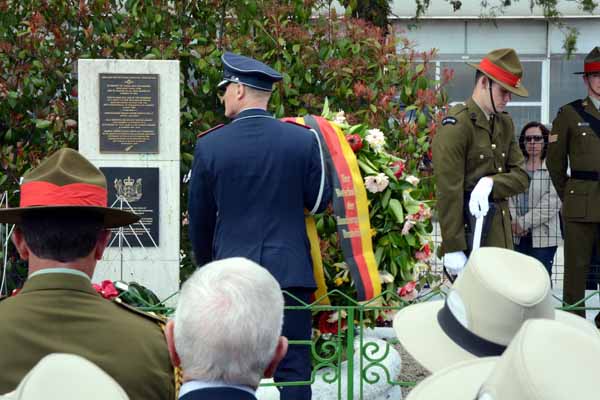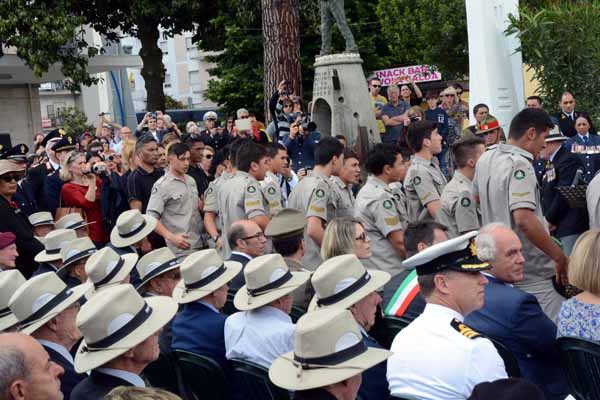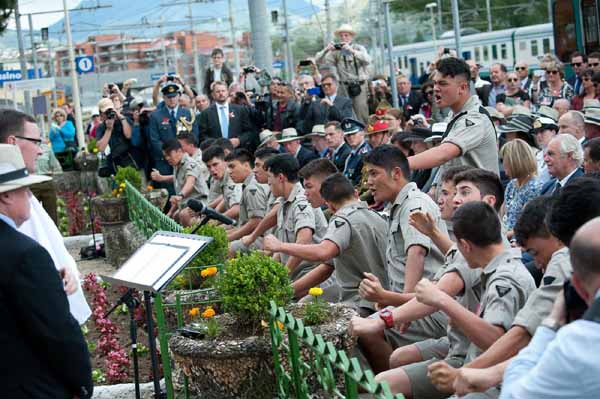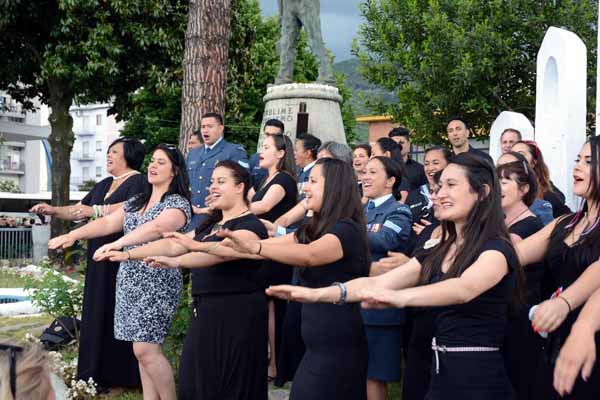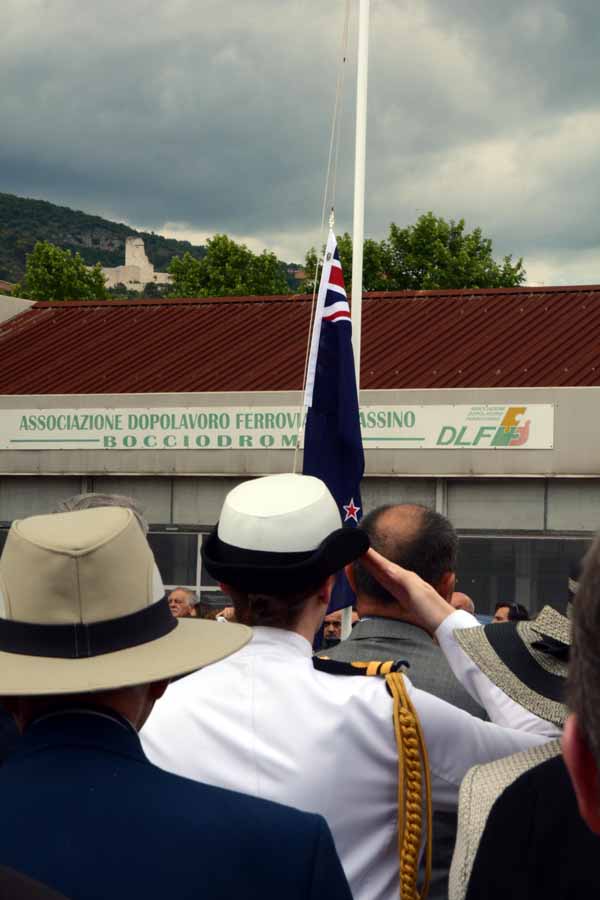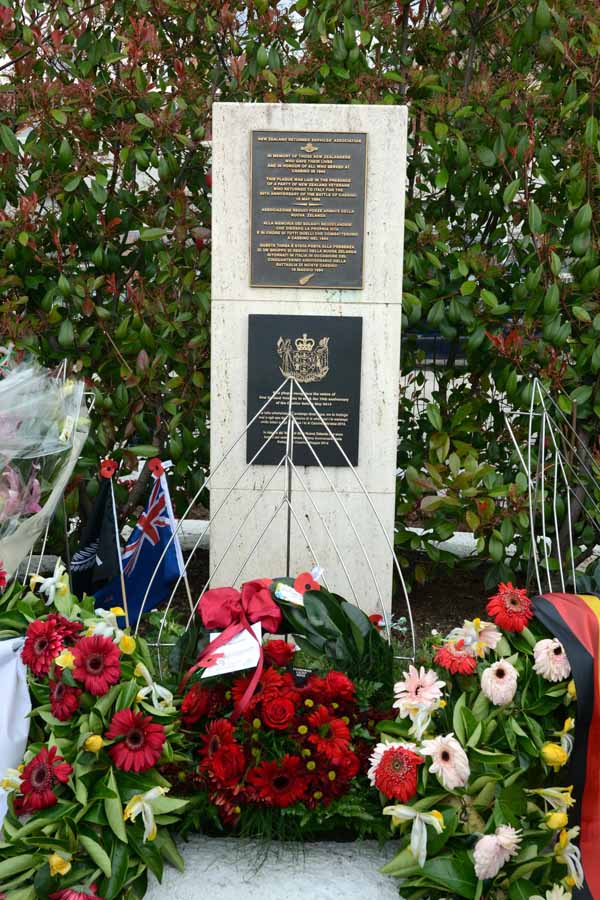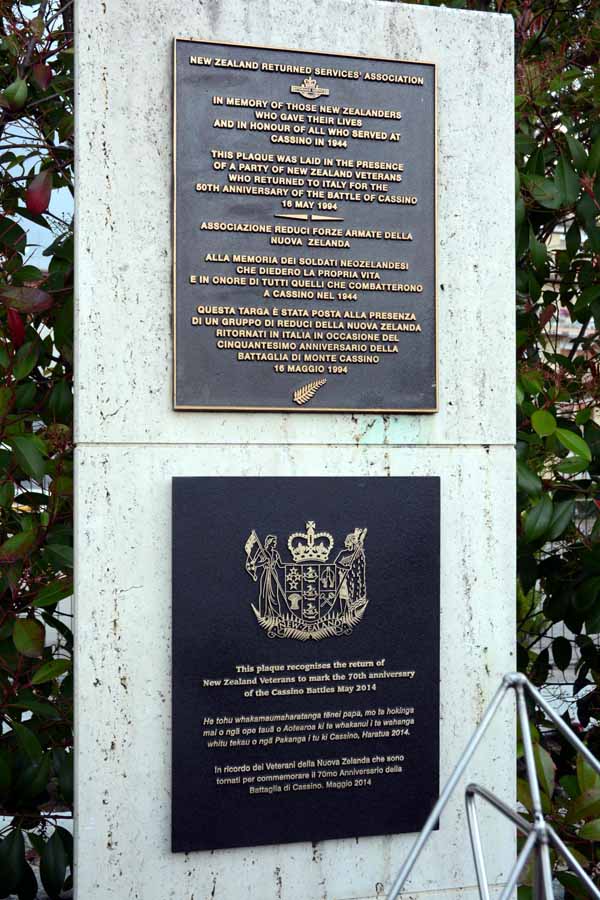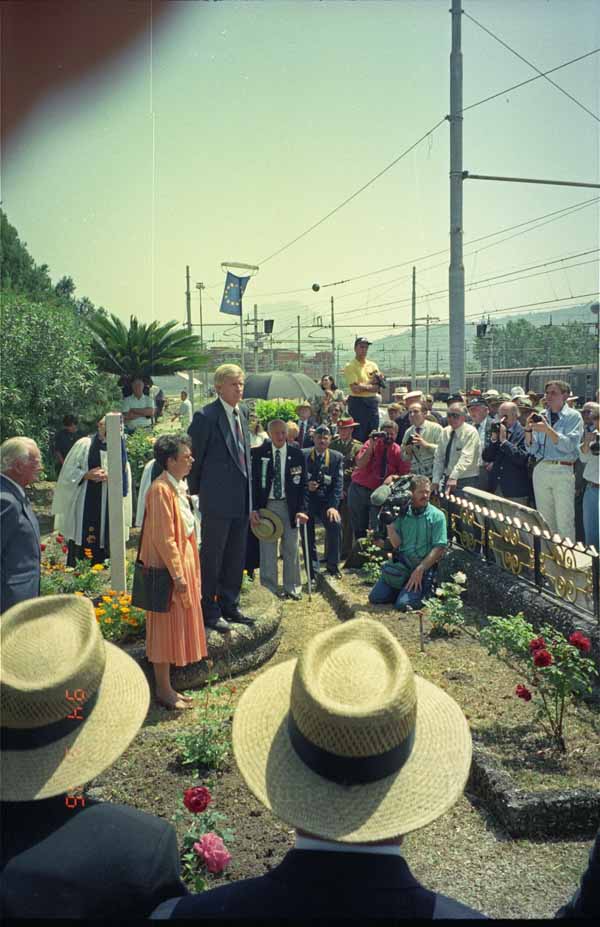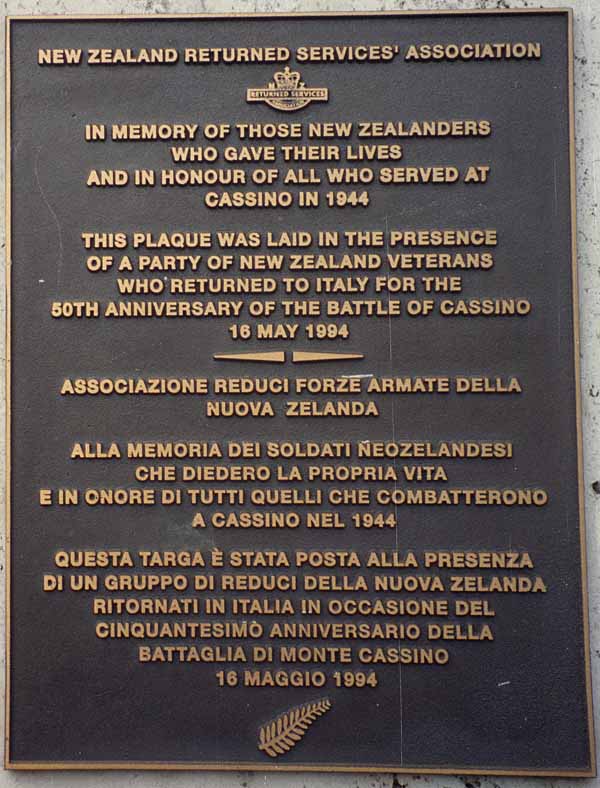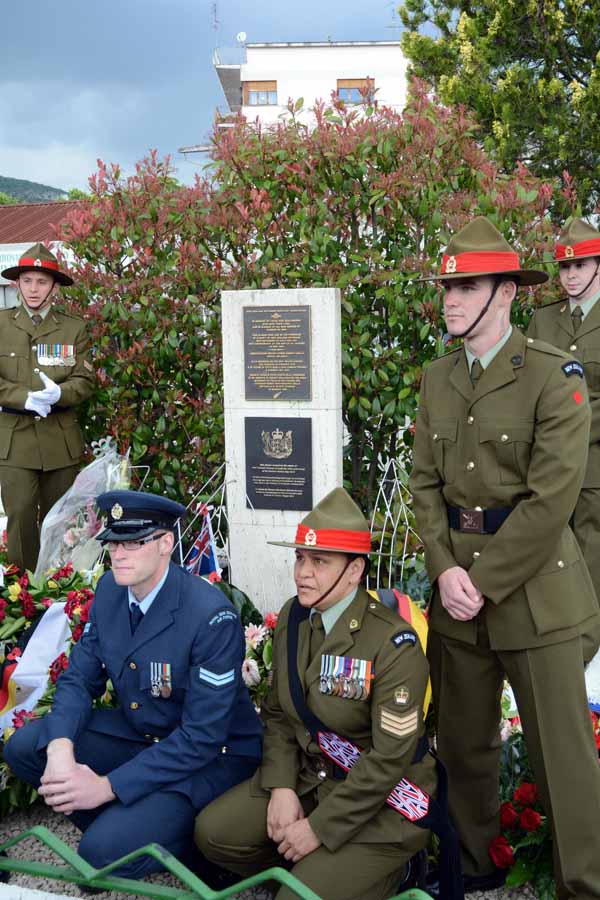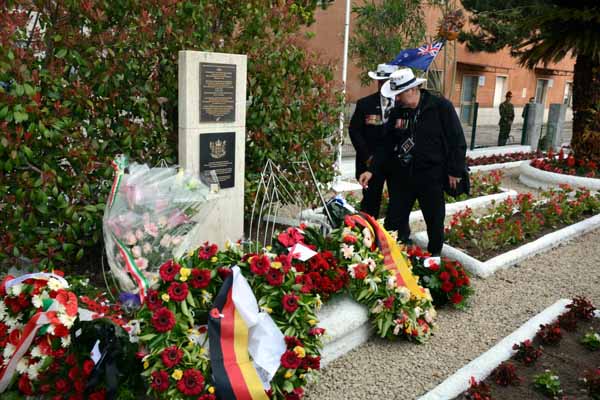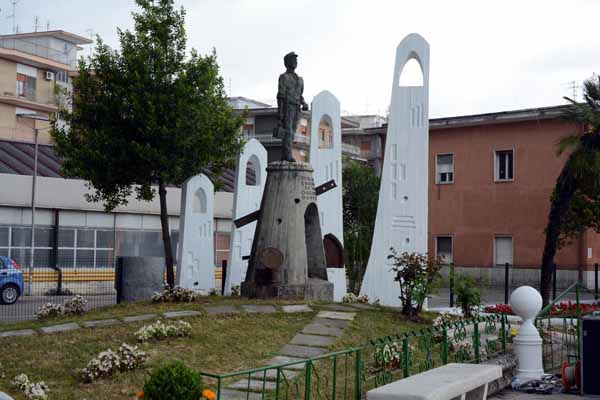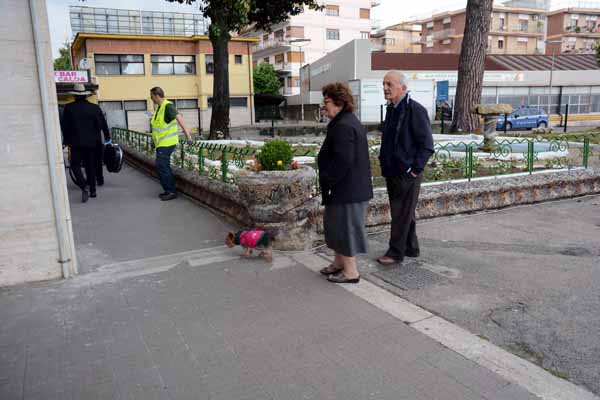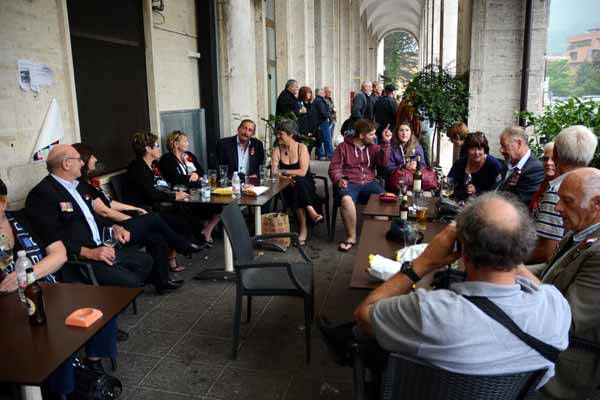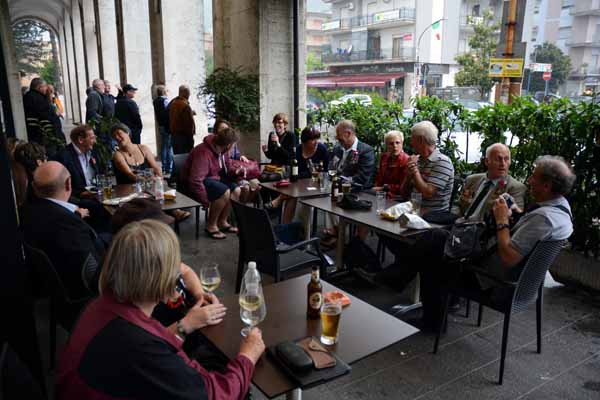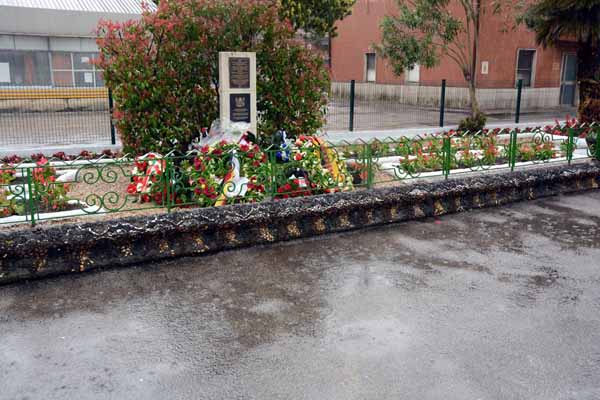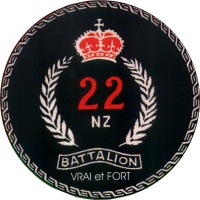
22nd Battalion 2NZEF
"Vrai et Fort"
Cassino Commemoration 2014 - 70 years on
The next generation returns
Day 4: The Ruins of San Pietro Infine and an unveiling at Cassino Railway Station
This was to prove a longer day than Greg had first planned. He had intended for us to visit the Abbey of Monte Cassino this day, but at a late stage the town council
decided to close the road up the hill. Several thousand Poles had descended on Cassino and they all wanted to visit the Abbey - chaos was predicted and dutifully arrived. We were glad we
had not ventured into the centre of Cassino that morning. Instead we went looking for the fabled pohutukawa trees that had been planted by the veterans in 1994, then we explored the ruined
village of San Pietro Infine, before entering Cassino for the opening of an art exhibition and the unveiling of another memorial at the Cassino Railway Station.
Pohutukawa trees at Minturno
So we changed our plans. Back in 1994, at the 50th Commemoration Service, two of the veteran New Zealand army nurses had planted two small Pohutukawa trees
at the Cassino War Cemetery. From the photos, they would have been in the area immediately behind the Cross of Sacrifice. The trees did not thrive, being too far from the coast and not liking the winter frosts, so they were moved to the Minturno Cemetery, close to the coast.
Off to Minturno we went, to see if the trees had survived: they hadn't, but we had a good morning looking for them. Except that was, until the bus would not fit under the railway line...
|
1994: Our two nursing sisters coming forward to plant the pohutukawa trees.
|
1994: Planting the trees in the area behind the Cross of Sacrifice.
|
The town of Minturno.
|
|
View from Minturno down to the Mediterranean Sea.
|
We took the wrong road here and got stuck.
|
But finally we found the Minturno War Cemetery, but no pohutukawa trees.
|
|
Our group at the gates to Minturno Cemetery.
|
San Pietro Infine - a tremendous battle
The 36th Texas Division - the Texas Rangers - were one of the groups given the task of capturing the town of San Pietro Infine,
which blocked the 5th Army's advance down the Liri Valley towards Cassino. In the ensuing battle the town was totally destroyed.
After the war it was left in ruins and a new town built lower down the hill. We visited the
destroyed town, to see the damage and for the dramatic view across the valley.
The fierce fighting at San Pietro Infine and the high casualties suffered led to the US Army commissioning a film of the battle
by acclaimed Hollywood director John Huston. The US Army refused to show it because it was too honest in its portrayal of the high
cost of battle and the difficulties faced. Today, the film can be downloaded from several sites such as
this one at archive.org
|
Looking from San Pietro Infine towards Cassino.
|
Mt Trocchio in the distance.
|
The small war museum at San Pietro Infine.
|
|
The remains of the local church, looking up from the road.
|
Part of the base of the church..
|
The old steps through the village, passing the church.
|
|
The remains of a house in the village.
|
More of the village paths.
|
Part of the ruined church.
|
|
Inside the church.
|
The remains of a house, with a shellhole through the wall.
|
Scene from the film about the battle, note the condition of the church in 1959.
|
|
View from the path down into the valley.
|
Remains of the church today.
|
"Jamais plus de guerre" - Never again war.
|
Opening of the Art Exhibition at the Cassino Library
Early in the afternoon, we ventured into Cassino to attend the opening of the Kiwi-inspired art exhibtion
at the local library - part of the 70th commemoration events.
The highlight of the opening was a stirring performance by several Maori groups, as seen in the following photos.
Note in the photos how modern digital photography, using phones or ipads, creates a distraction for the rest of the audience,
especially when these large, and brilliantly-lit devices are held high above the head of people sitting in the front rows.
As with many events in Italy, prceedings were running
late, which meant that all of the performers and nearly all of the audience bolted for the door as soon as the opening was over. All were due at the next function,
the unveiling of the memorial plaque at the Cassino Railway Station. I did have some sympathy for the organisers, watching around 100 people depart. We were leaving behind
a very extensive and very tempting (and one would guess, very expensive) array of fresh finger food, sufficient for 150 guests but with only 20 or so left to consume it.
Ceremony at the Cassino Railway Station
Nearly all elements of the NZ Division saw action in Cassino. Some spearheaded the attacks, others were "lucky" to mount a holding action after the main battles had
played out. It was the 28th (Maori) Battalion that suffered the most in Cassino, being ordered to attack along the railway line and to take and hold the railway station
until the tanks arrived. At great cost they took the station, but the flooded valley and the tremendous destruction blocked the tanks. Eventually the Maoris were forced to abandon
the station.
Ever since, the Cassino Station has been a revered place. During the 50th Commemoration services in 1994, a memorial plaque was unveiled on the edge of the platform. A
second plaque was to be unveiled for the 70th in 2014.
The service was planned for mid-afternoon. The offical party of veterans, NZ Governor-General and others attended. It was a stirring service, the highlight for many was the
singing and haka. Many were moved by the fine performance of Whakaria Mai and the New Zealand National Anthem.
After the service our group retired to the cafe section of the station for a quiet beer and wine. That was a fortunate decision - within a few minutes
the sky darkened and the rain came down in torrents. A fitting end perhaps to the day.
|
The crowds gather at the Ralway Station - NZ Army, verterans, supporters and even a Polish Boy Scout.
|
They marched casually onto the railway platform.
|
The Italian Railways had parked a carriage for protection and as a photographic booth.
|
|
The service began...
|
and a moving version of the hymn Whakaaria Mai was sung...
|
led by the choir in the background.
|
|
The NZ Ambassador to Italy spoke....
|
|
followed by the Governor-General.
|
|
There was time for another hymn.
|
Sir Jerry and Lady Janine listening..
|
|
|
A reading by a veteran.
|
A crowd of Kiwis had gathered.
|
And then the Governor-General laid the first wreath.
|
|
|
Followed by the Minister of Defence Hon Jonathan Coleman.
|
Then a representative of the German Army.
|
|
Boys from the Northland Leadership Academy performed the haka
|
The haka (Photo courtesy NZDF)
|
NZDF Cultural Group and others performing a Waiata.
|
|
To the sound of the bugle, the flag was lowered for 1 minute of silence.
|
The 1994 and 2014 commemoration plaques with wreaths.
|
The 1994 plaque (upper) and 2014 plaque (lower)
|
|
1994: the then Minister of Defence Warren Cooper at the unveiling.
|
The plaque in 1994.
|
After the ceremony there was a chance for photos...
|
|
and to examine the wreaths while remembering the past.
|
And then the station was left to the other memorials...
|
and to the locals walking their dog.
|
|
We retired to the cafe ...
|
in the shelter of the station...
|
Leaving the Cassino Railway Station Memorial alone in the heavy rain.
But, there is space on the memorial for another plaque in 2034....
And I might just be there to see it unveiled.
|
Return to top of page
Back to previous day 
 Forward to next day Forward to next day
Return to first page
Last updated: 20/07/14
|

